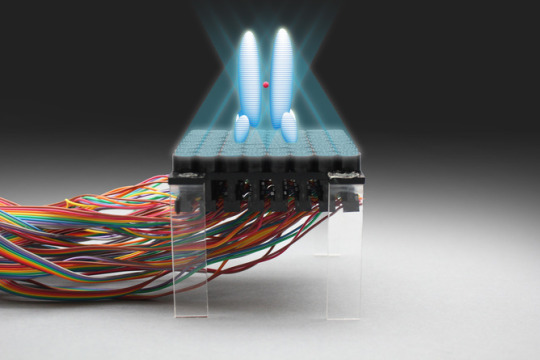Tractor beams: No longer just science fiction

Artistic depiction of an alien abduction by Travis Walton. Crobard/commonswiki
For THE CONVERSATION, Bruce Drinkwater, Professor of Ultrasonics at the University of Bristol, recounts how he and his colleagues invented a Star Trek-style sonic tractor beam.
When I think of a tractor beam – a stream of energy that can move objects – I imagine a ray emerging from a spaceship gripping an object outside and pulling it in. In my mind this spaceship is the Starship Enterprise from Star Trek, but the idea has been used in countless science fiction plots. But in the last few decades, the concept has also gathered attention from scientists and engineers.
Despite advances, it has, however, proven difficult to build a tractor beam that can move real-life objects in a controlled way. But in our new study, published in Nature Communications, we show that millimetre-sized objects can be levitated, moved and rotated in mid-air using sound waves. The technique could one day be used in a number of applications ranging from targeted drug delivery to moving delicate or hazardous materials.

Illustration of the acoustic force fields created by the 64 speakers beneath the red object – strong enough to hold or move it. Asier Marzo, Bruce Drinkwater and Sriram Subramanian
We knew that acoustic forces could be simulated, so we set our computers to work, running simulation after simulation. Key to this was to describe the conditions for stable levitation – points where the acoustic pressure was low but surrounded by high-intensity sound (too high-pitched for humans to be able to hear it). This led to converging forces that would hold an object in place.
The answer that came back told us how to set the amplitudes and phase delays of the loudspeakers to get the strongest possible trapping effect. And suddenly it worked – the solutions produced by the model caused particles to be suspended against gravity. It was a magical moment when Asier Marzo, the PhD student working on the project, showed this to the rest of the team.
Read the rest of this fascinating article at THE CONVERSATION.
